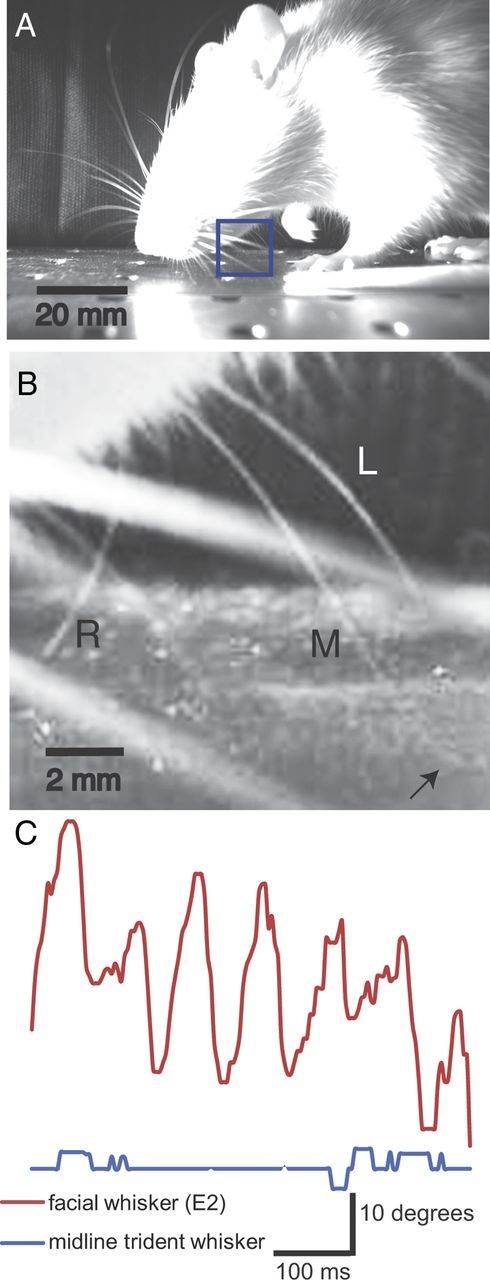Figure 2.

Behavior: ground contact of trident vibrissae during head-down running and absence of whisking. A, Still image from a high-speed infrared video of a rat running head down in an environment novel to the animal. The video was taken under bright infrared illumination but under low levels of ambient visible light. Note the position of the paw, which indicates that the frame was taken at the middle of the animal's stepping cycle. B, Enlargement of the trident whisker region (outlined with the blue box in A). Brightness and contrast have been enhanced by image processing to increase the visibility of whiskers. The left (L), middle (M), and right (R) trident whiskers are visible. Inspection of the video sequence shows that the left and right trident whiskers are free in air, whereas the midline trident is dragging on the ground (arrow). C, Rat E2 facial (red) and midline trident (blue) whisker deflection angles during 500 ms recording. Recordings were collected using high-speed videography (240 frames/s) taking the trident whisker tip and the whisker origin as references for angular measurements. Facial whiskers demonstrated large deflections (30°), whereas trident whiskers showed only small and no rhythmic movements.
